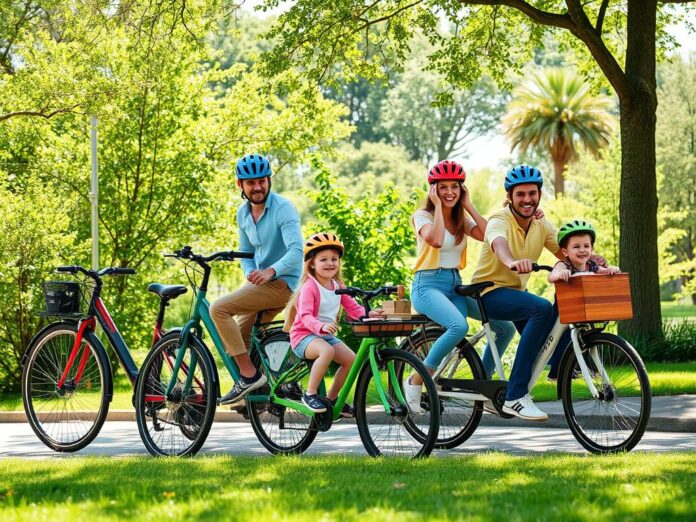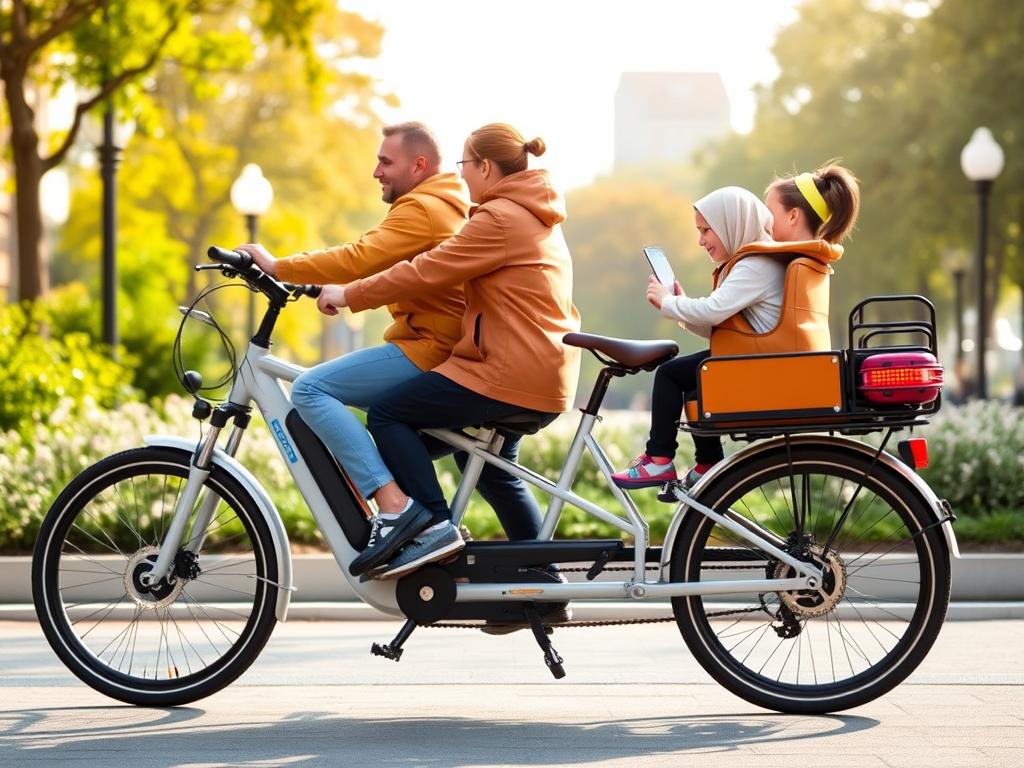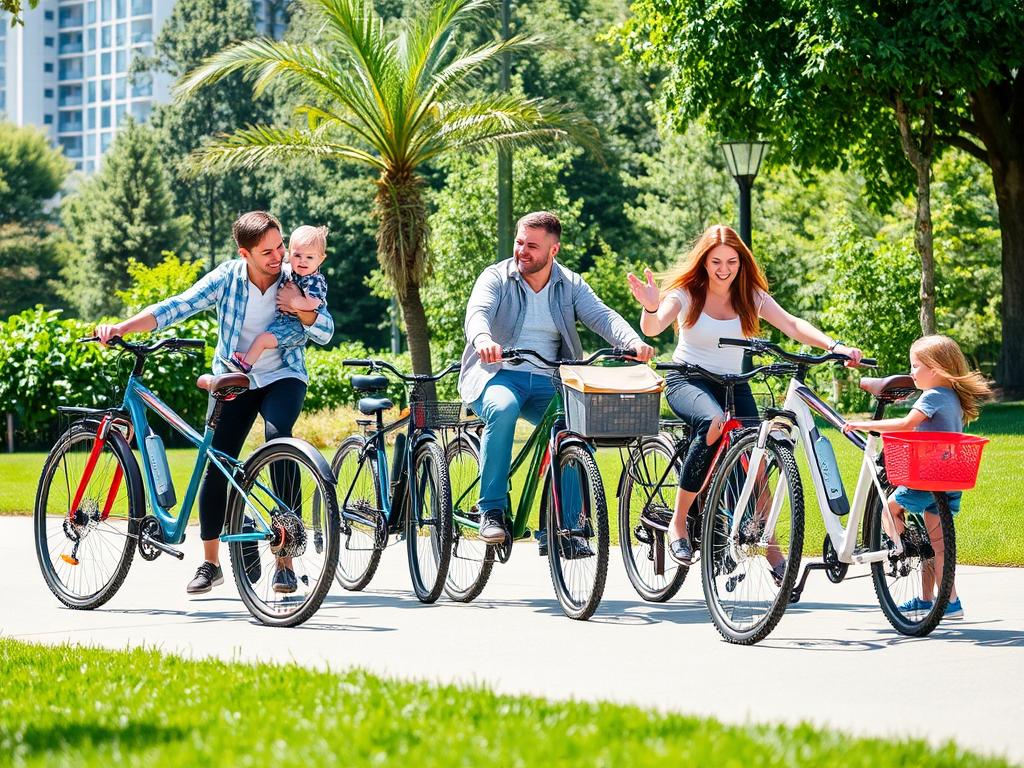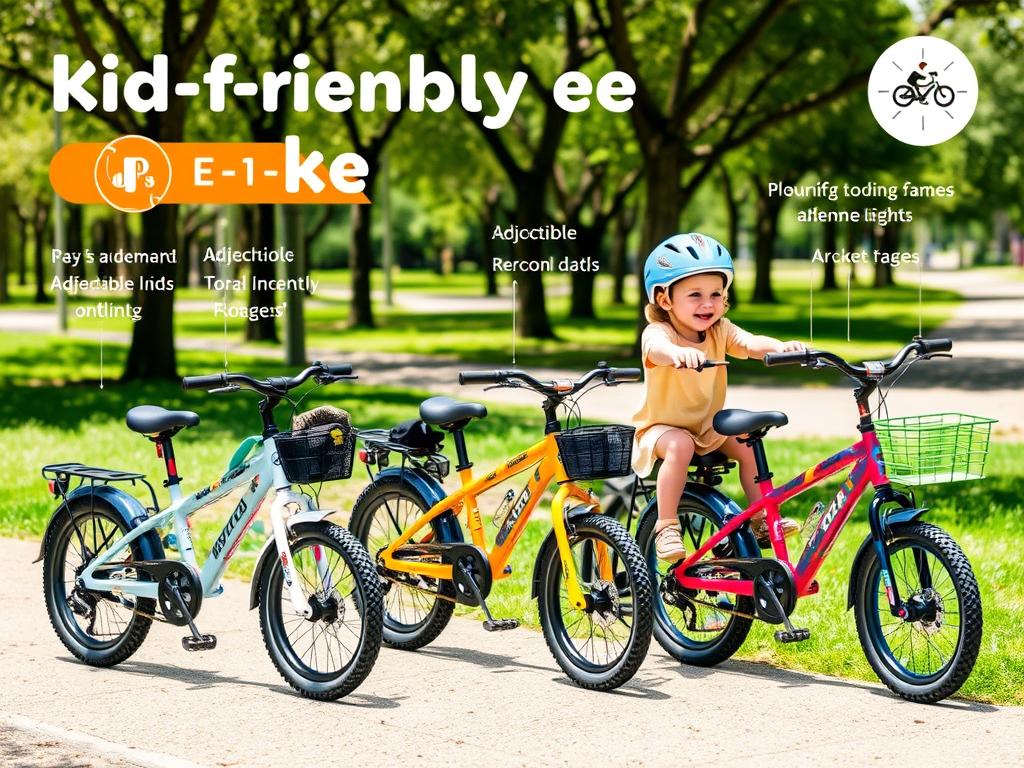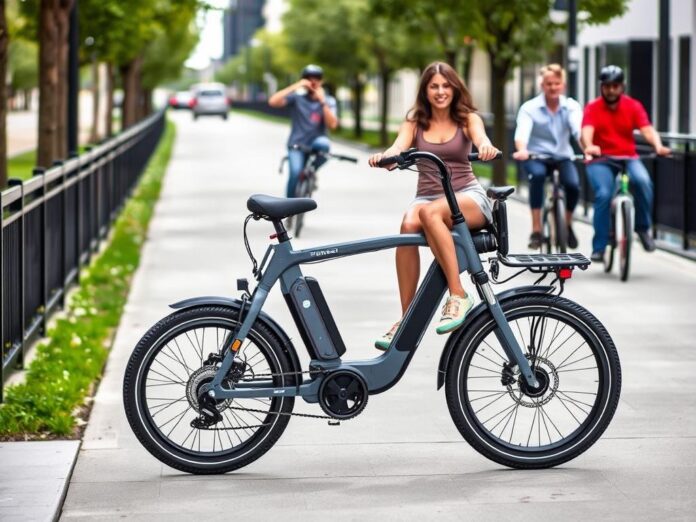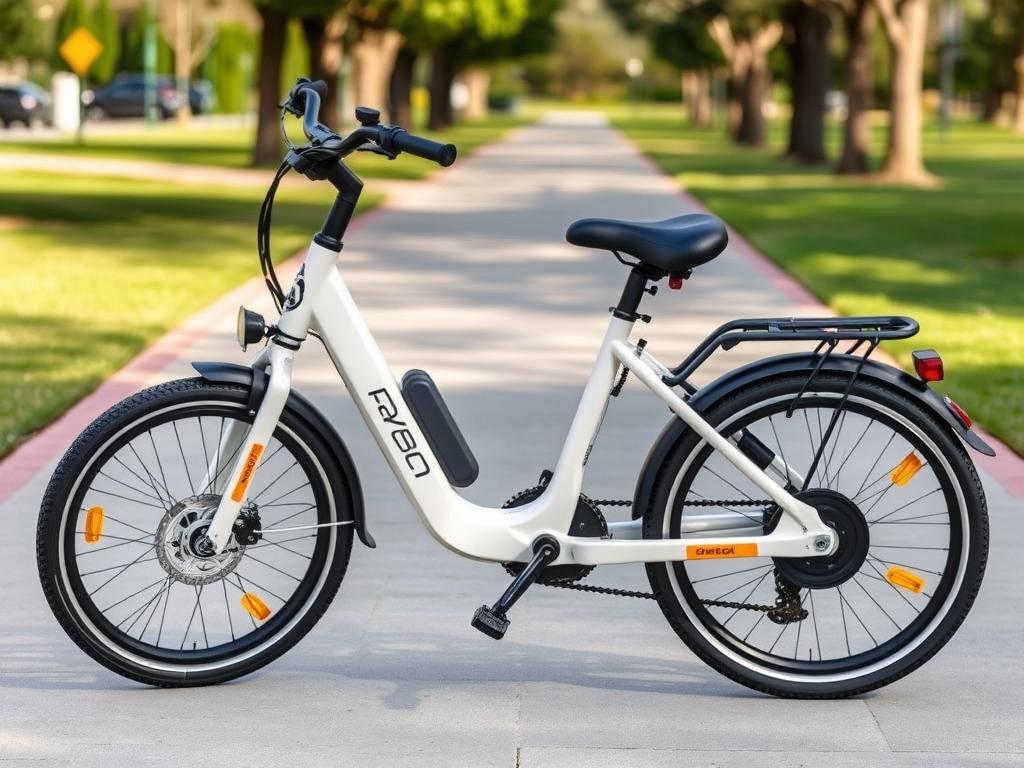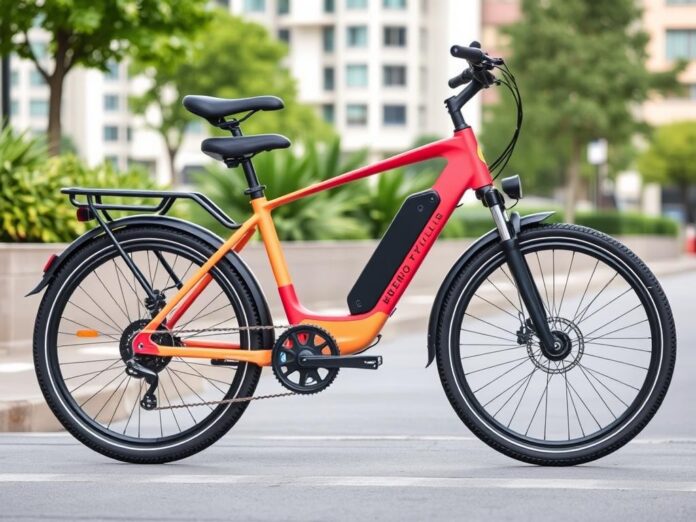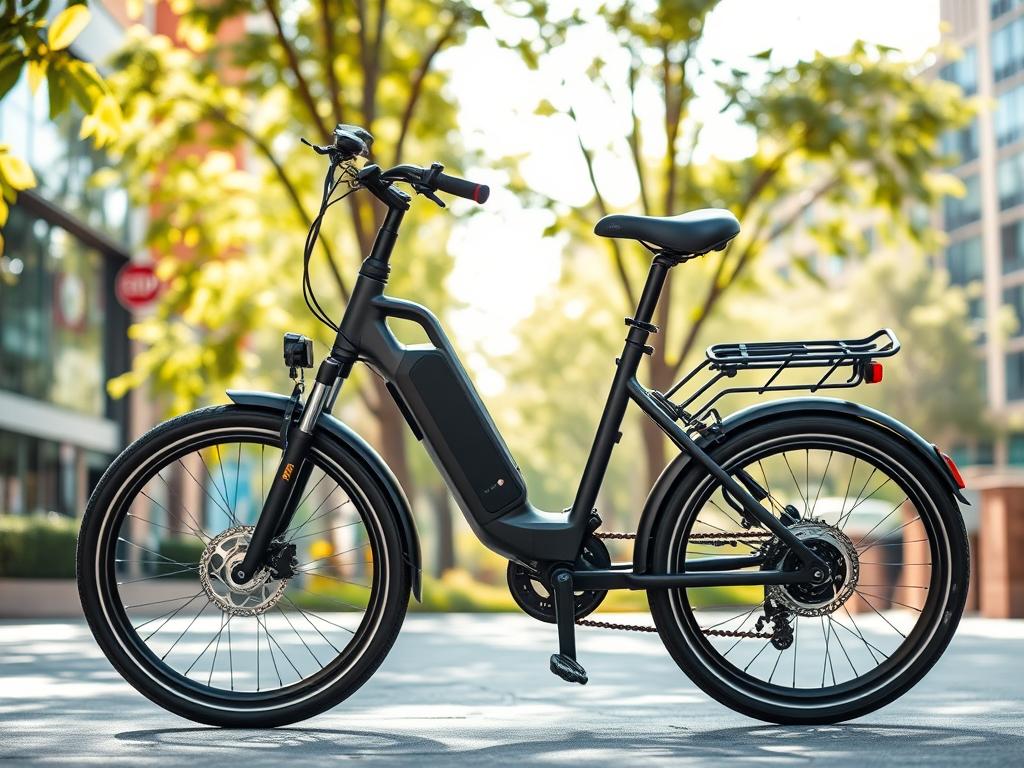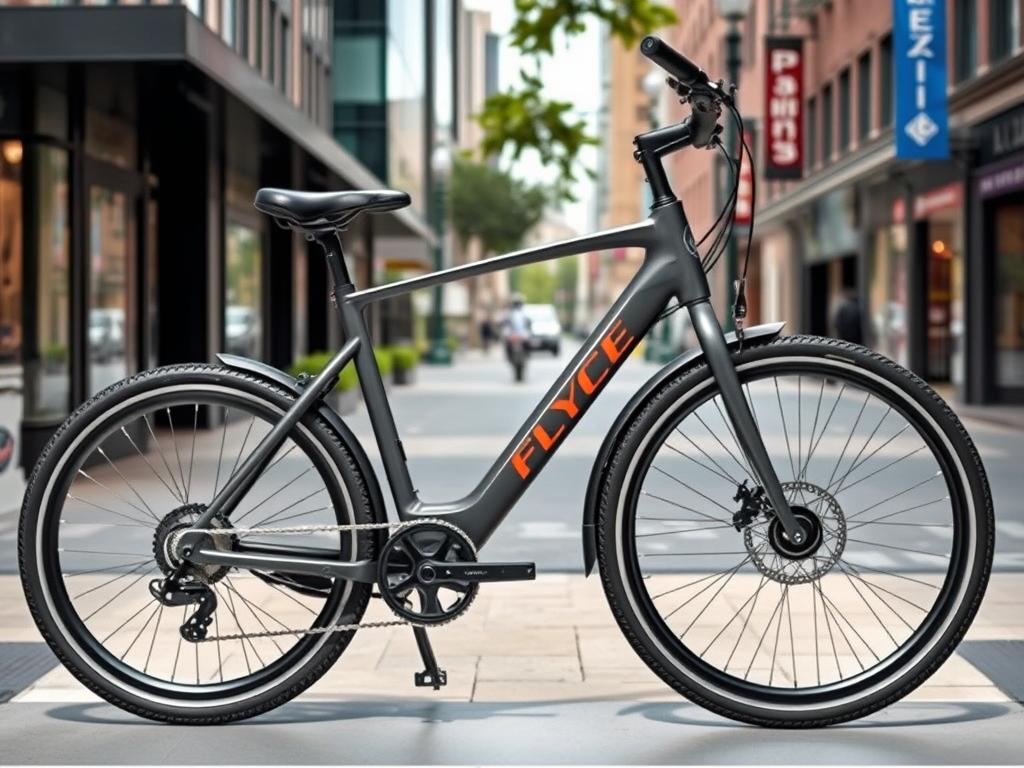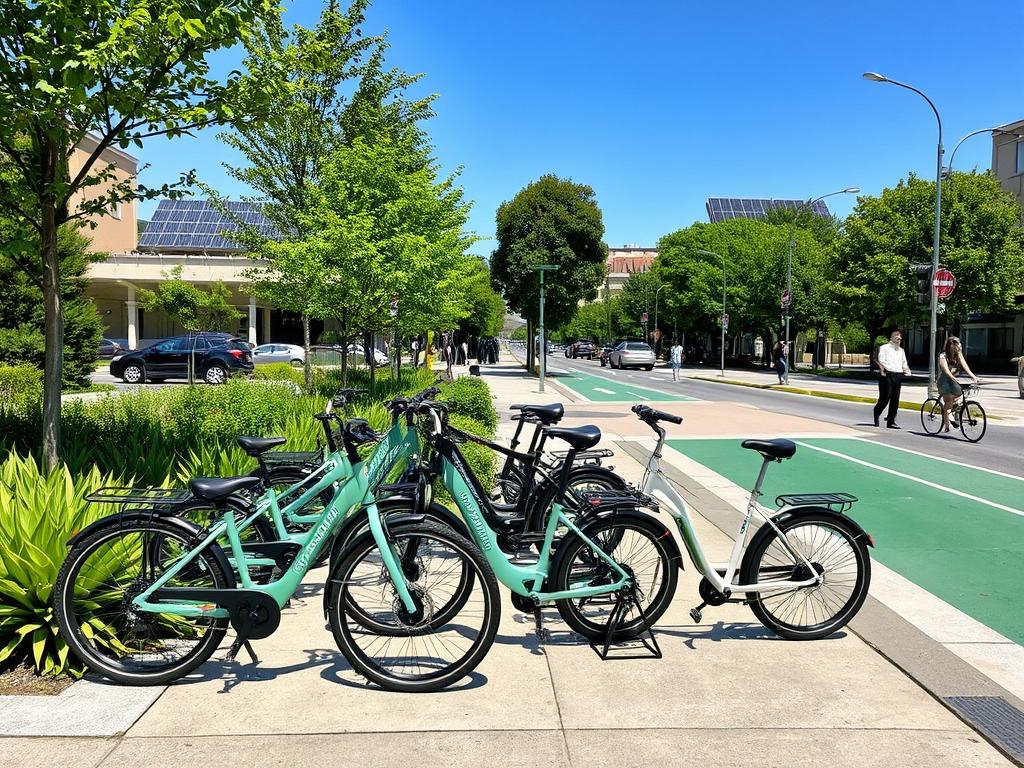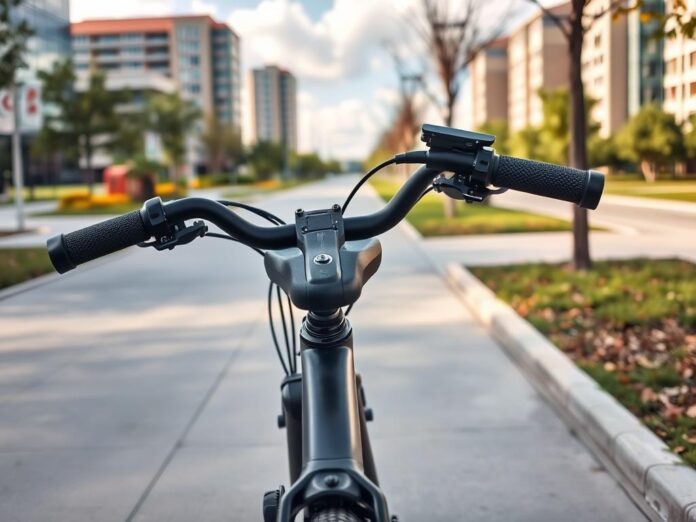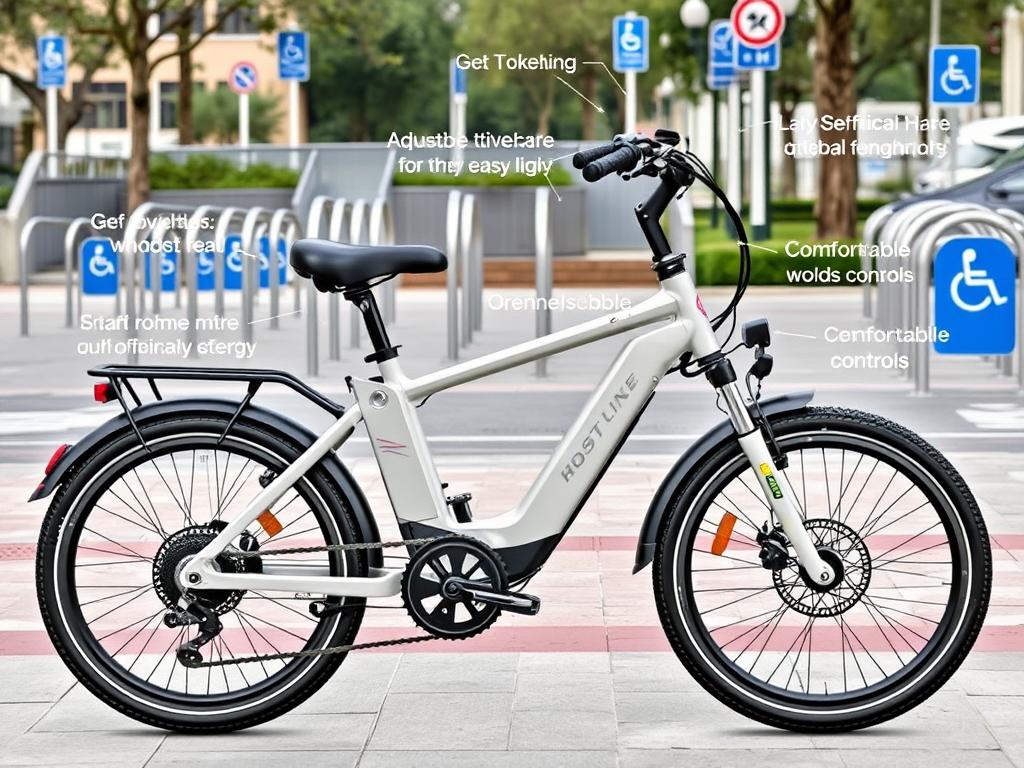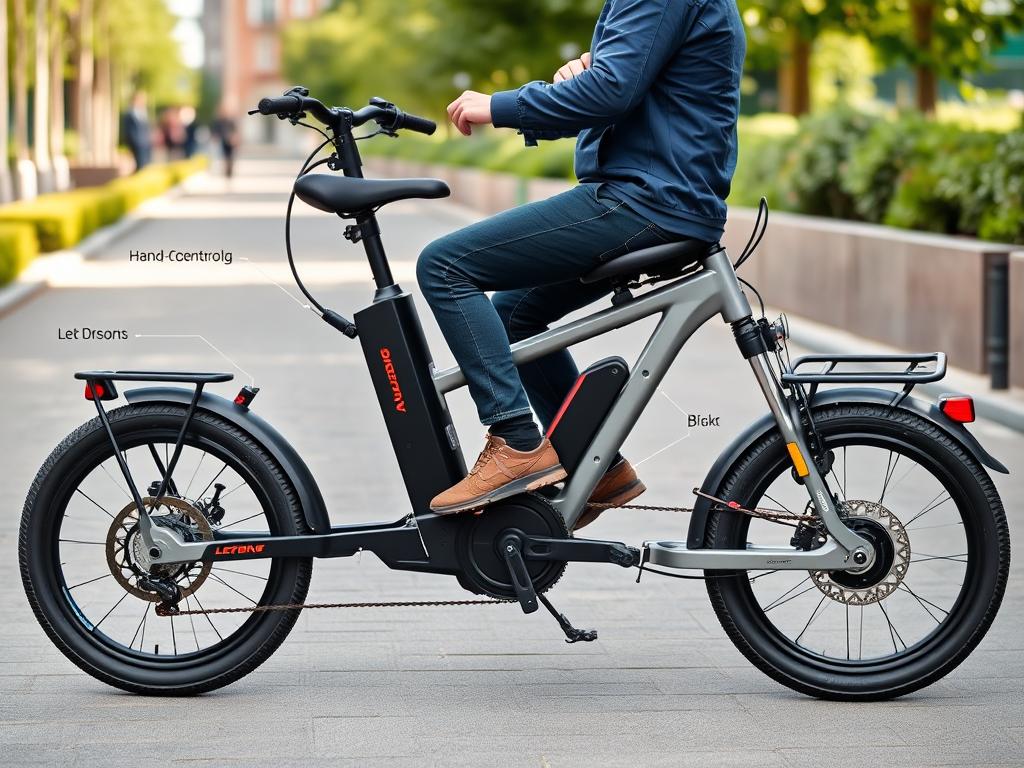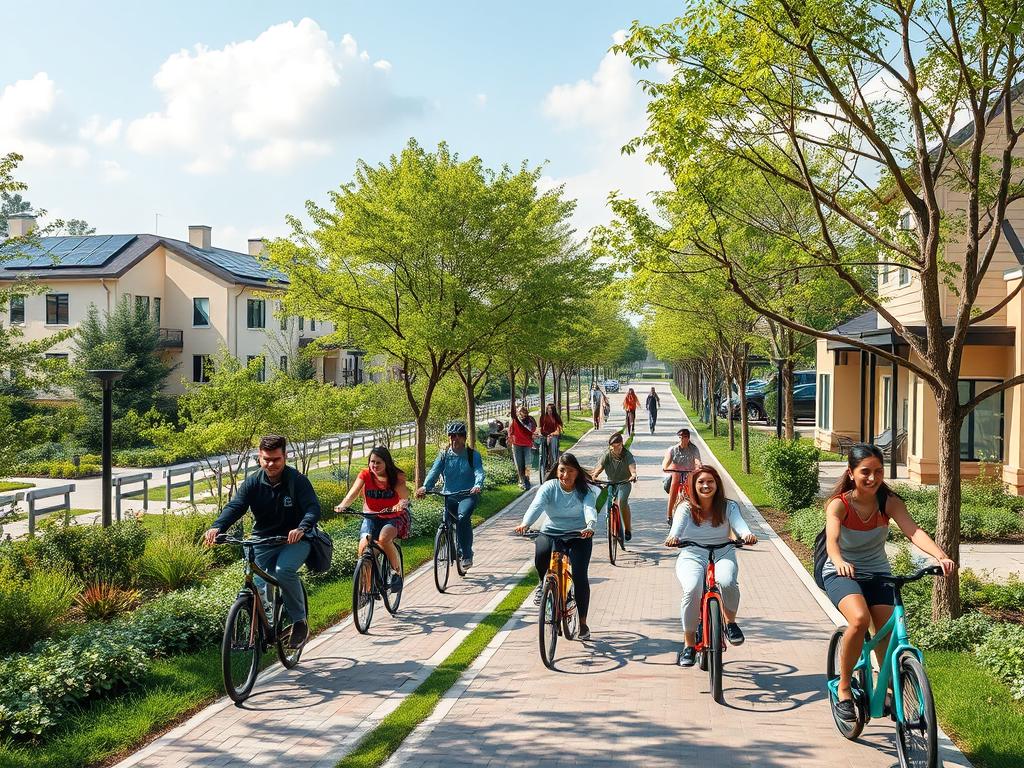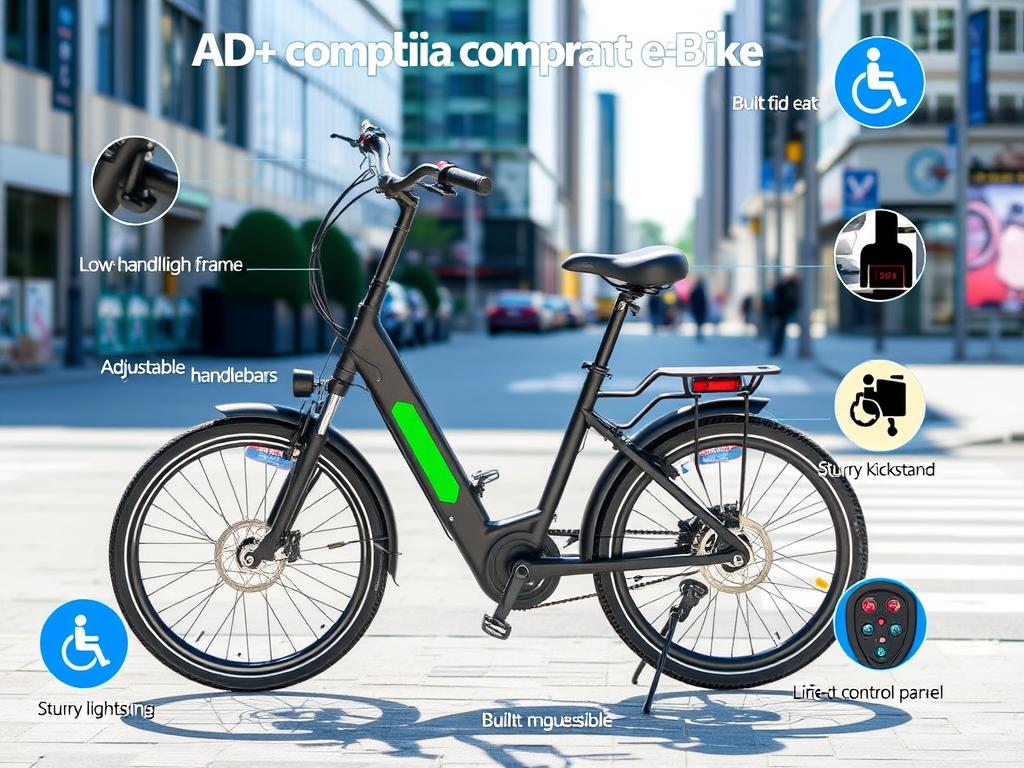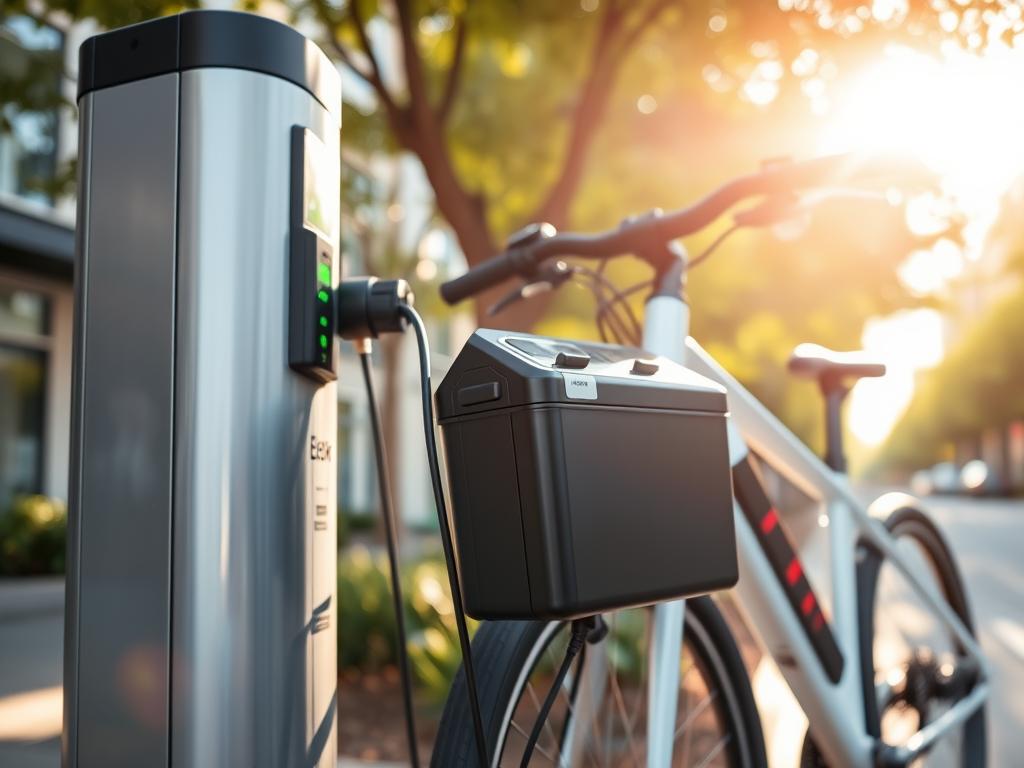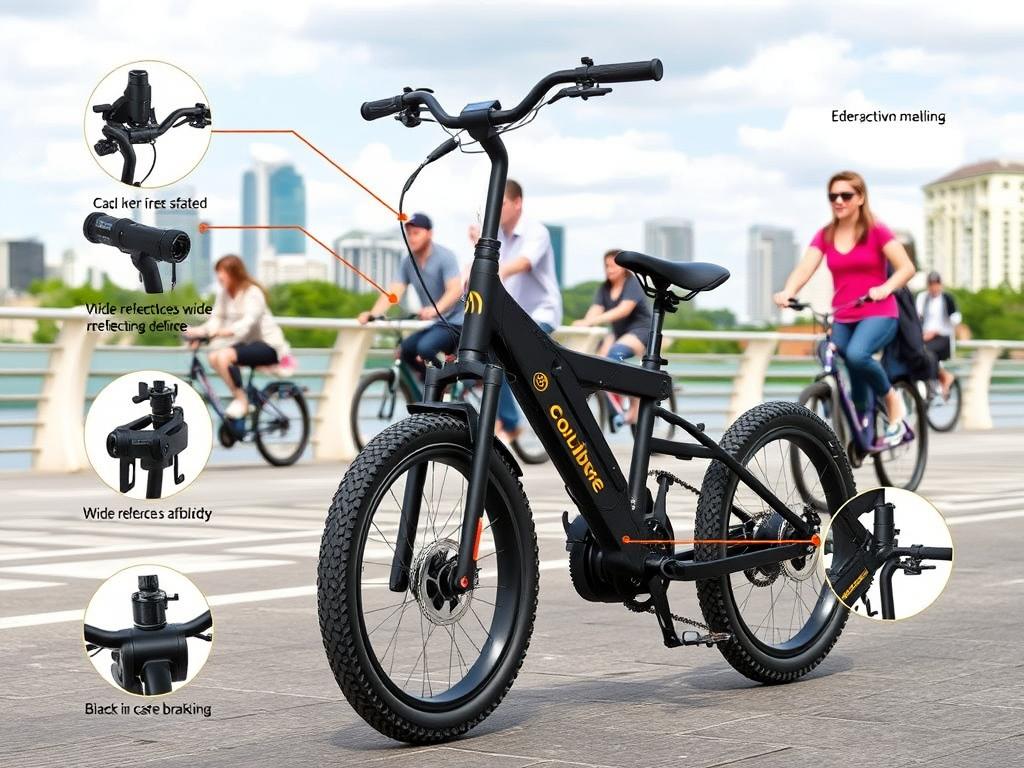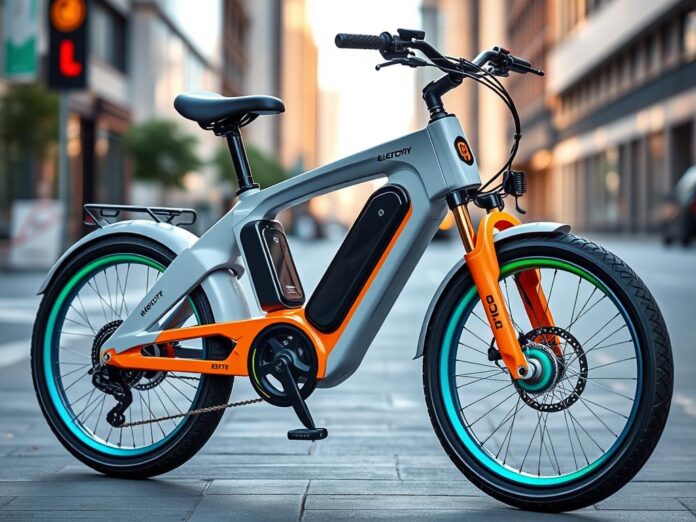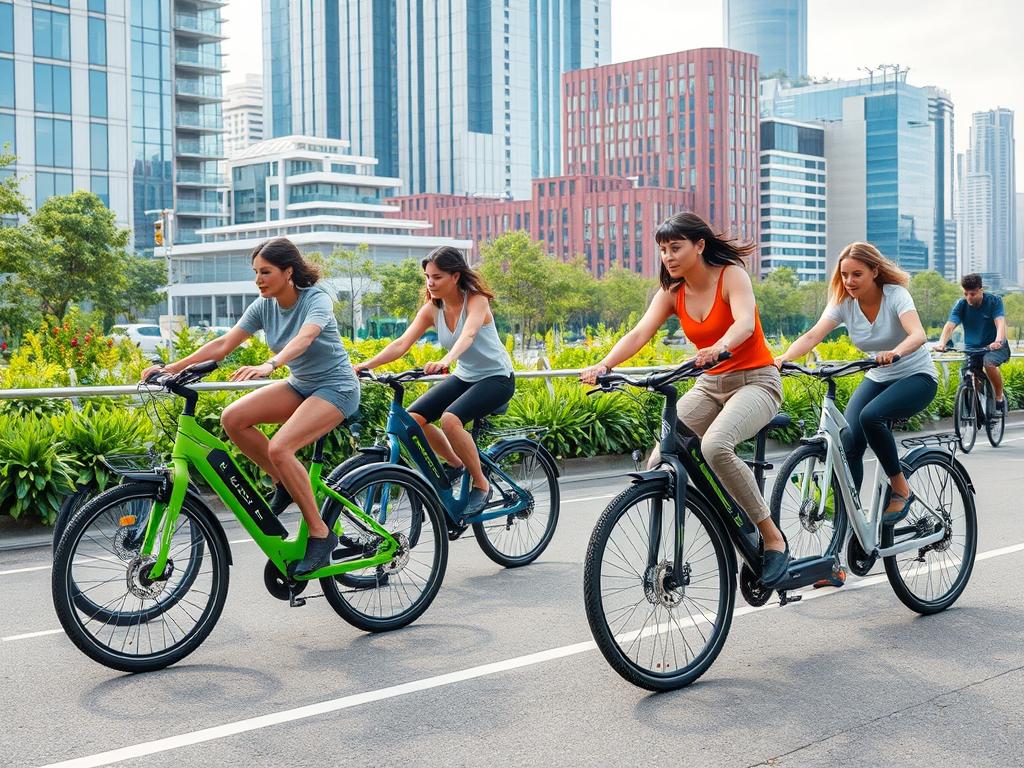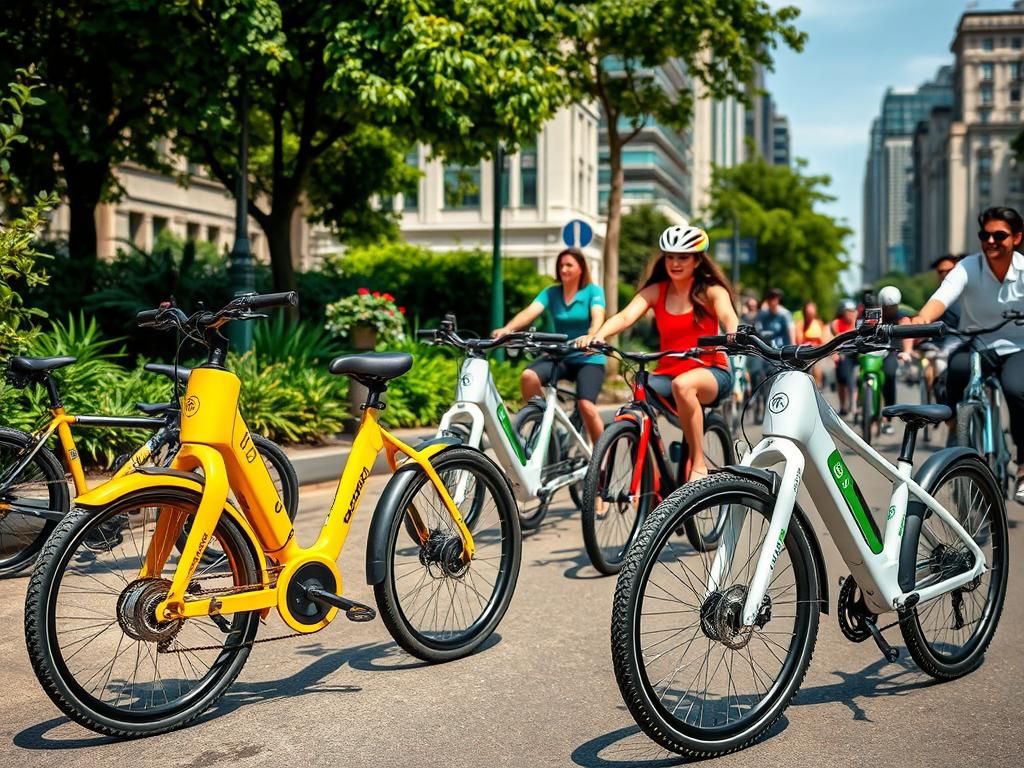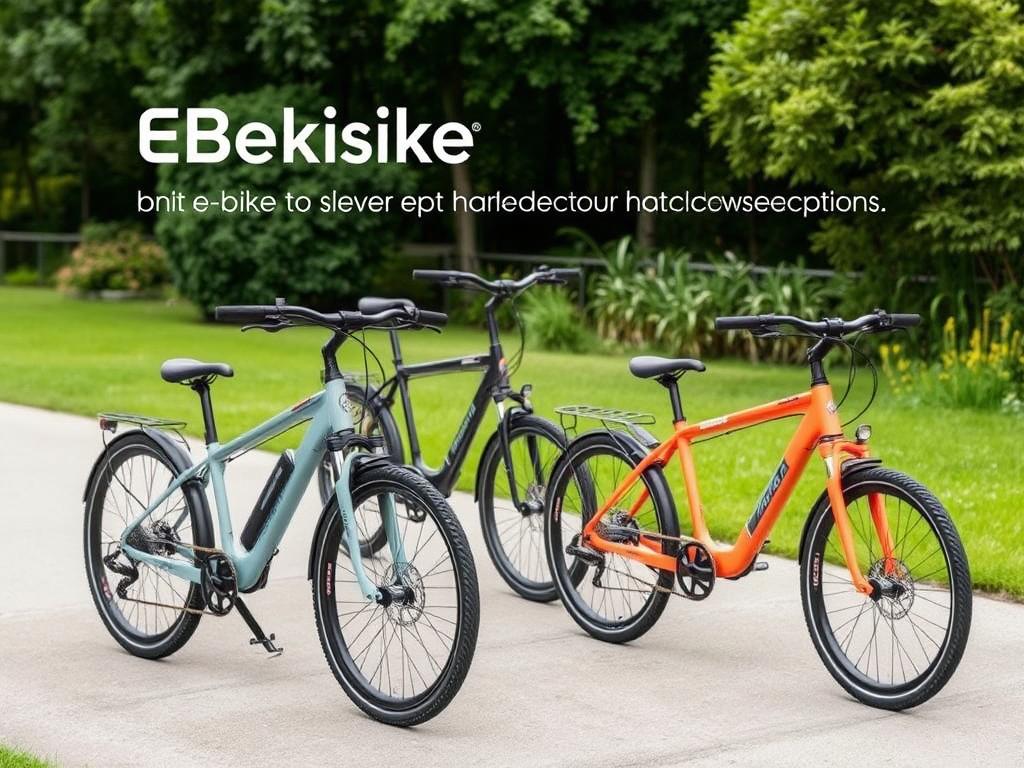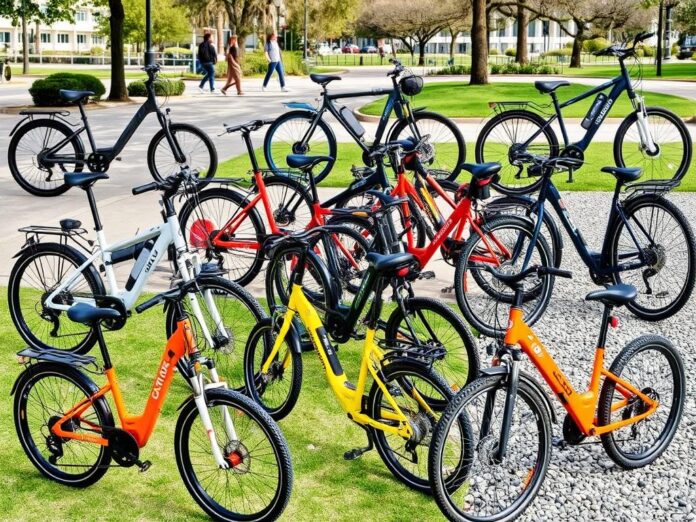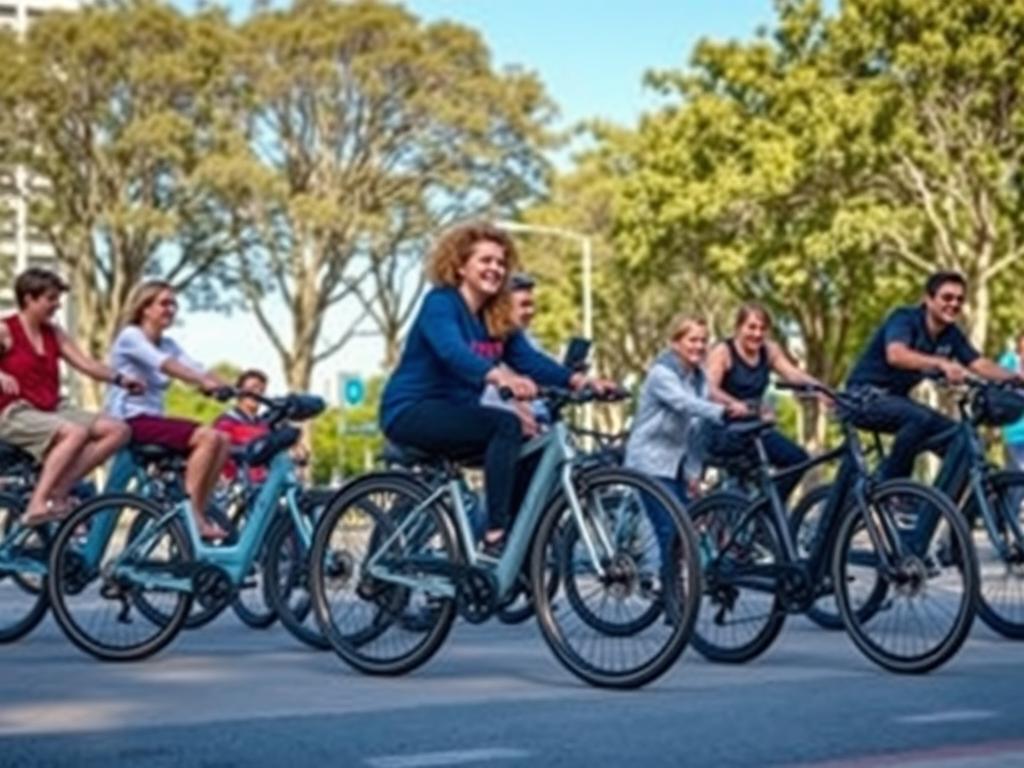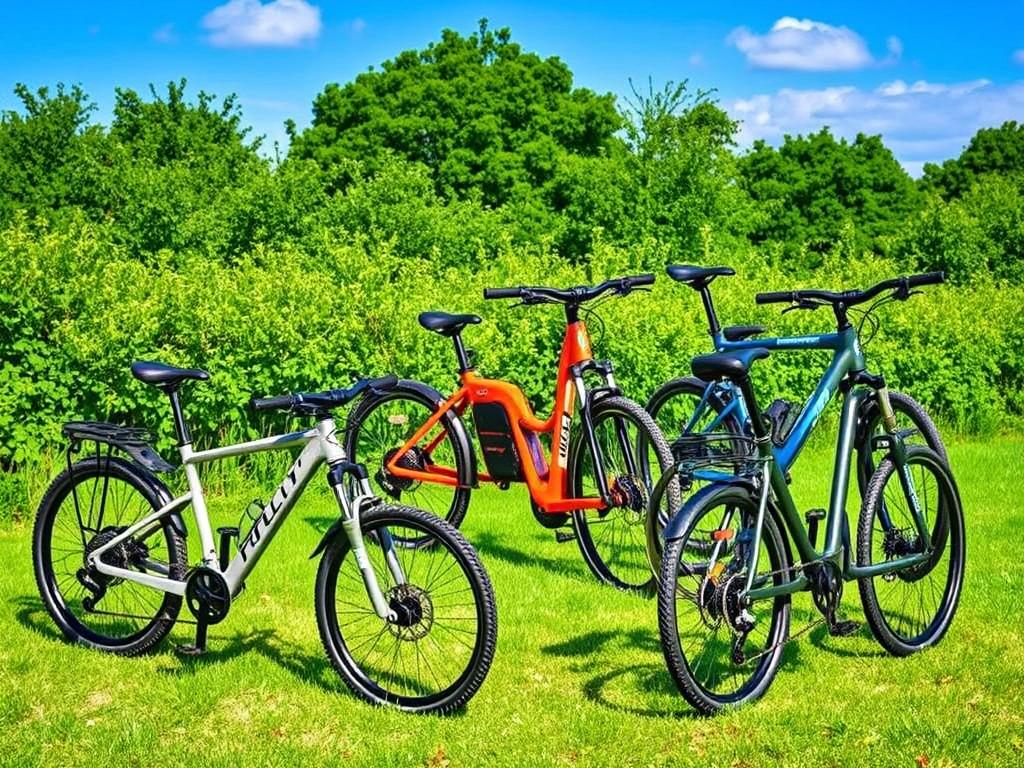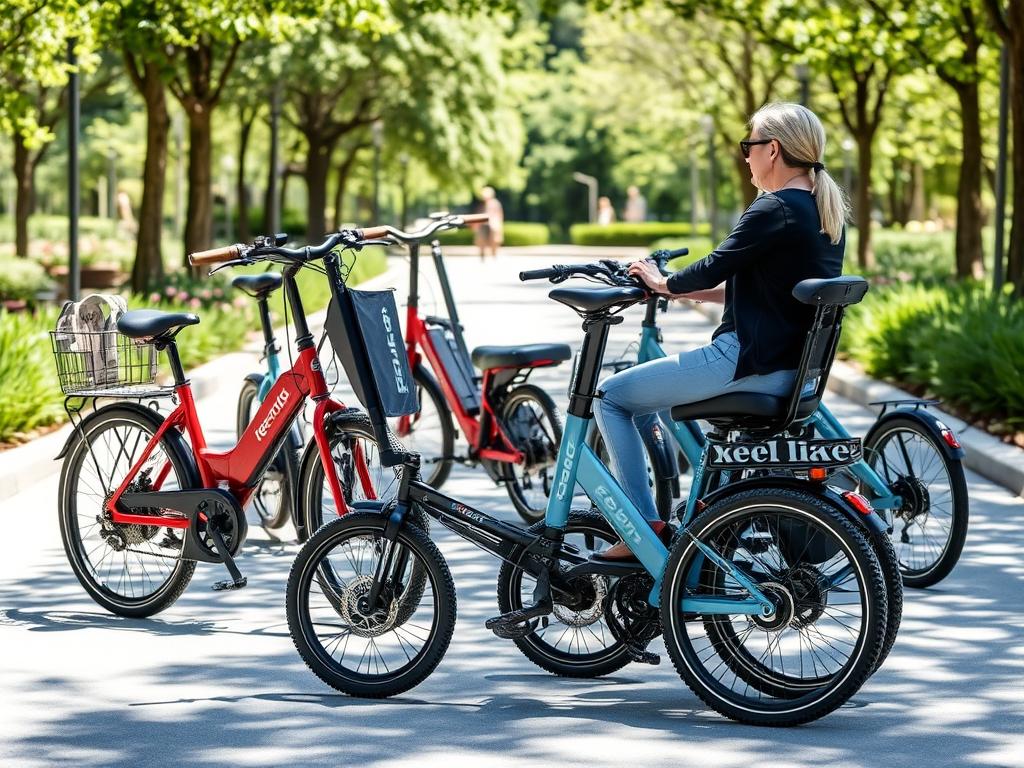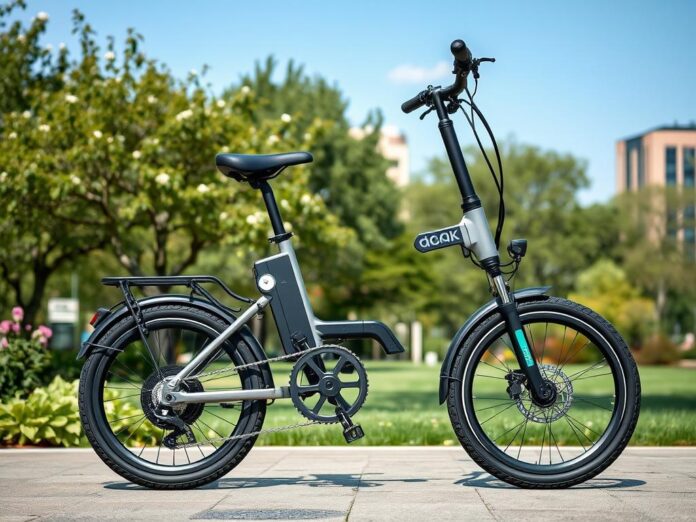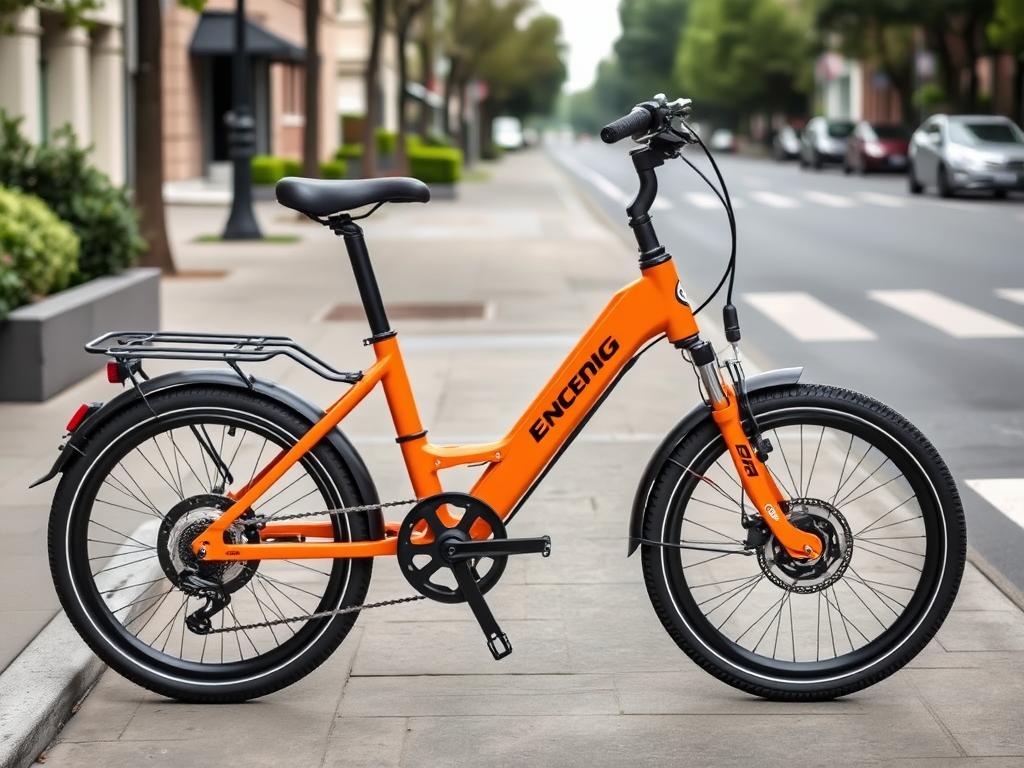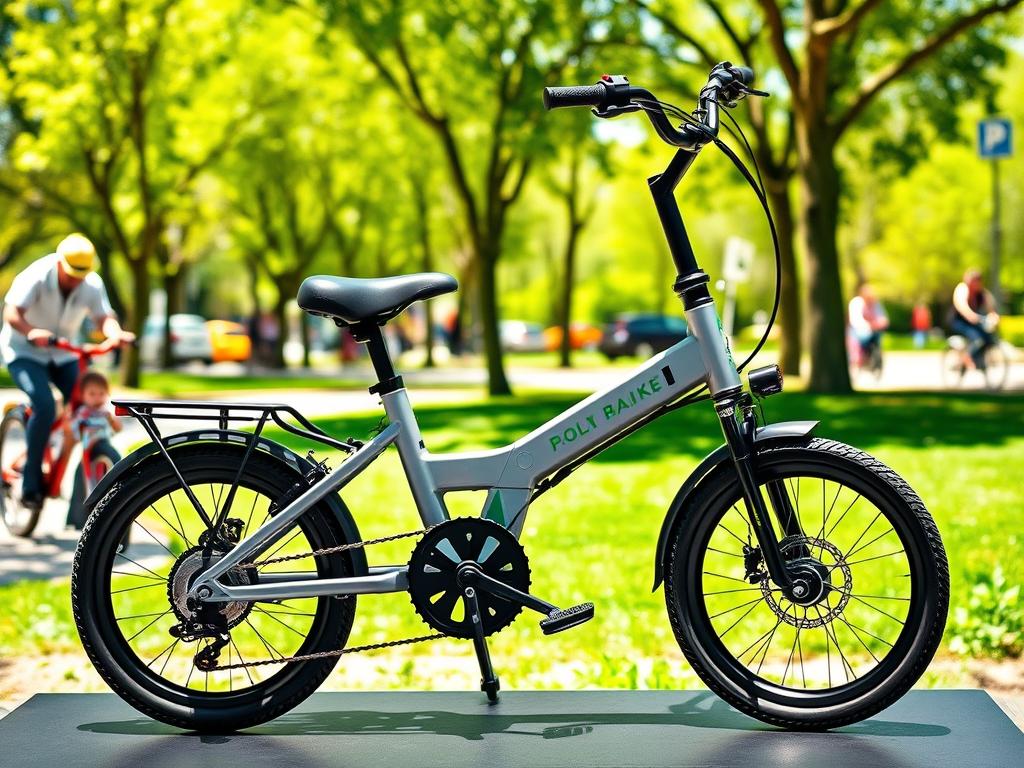Electric bikes (e-bikes) are changing how we travel and have fun together in the United States. It’s crucial to have the right accessories for your e-bike. This makes riding safer, more comfortable, and more fun for your family.
From safety gear to storage solutions, these accessories are key. They help you get the most out of your e-bike adventures.
Key Takeaways
- Accessories enhance the safety, comfort, and practicality of family e-bike rides
- Essential gear includes helmets, locks, lights, reflectors, mirrors, and bells
- Accessories improve the overall riding experience and enable safer family cycling adventures
- Customizing your e-bike with the right accessories can transform your family’s transportation and leisure activities
- Investing in quality accessories ensures the longevity and protection of your family e-bike investment
Understanding the Importance of Accessories for Family e-Bikes
Choosing the right accessories is key for family cycling adventures. E-bikes are a hit in the USA for their fun and efficient way to explore outdoors together. But, to ensure safety and enjoyment, getting the right accessories is essential.
Safety gear is a top priority for family e-bikes. Helmets can cut head injury risk by up to 88% in accidents. Reflective gear and lights boost visibility, keeping your family safe, especially at night.
| Accessory | Importance | Recommended Features |
|---|---|---|
| Helmets | Safety | Proper fit, CPSC-certified, comfortable |
| Lights | Visibility | Bright LED, long-lasting, easy to install |
| Reflective Gear | Visibility | Ankle/wrist bands, vest, tape |
Comfort and convenience are also important. Adjustable seats and ergonomic handlebars ensure a good fit for all. Storage solutions like panniers and cargo racks let you carry essentials for your adventures.
Investing in the right accessories makes family e-bike rides safer, more enjoyable, and efficient. With the right gear, your family can explore with confidence and make lasting memories on every ride.
Must-Have Safety Accessories for Your Family e-Bike
Keeping your family safe on electric bikes is very important. There are key safety items that make e-biking better. Let’s look at some important safety accessories for your family e-bike.
Helmets: Choosing the Right Fit for Everyone
Helmets are a must-have, as they can cut head injury risk by up to 88%. When picking family bike helmets, make sure they are CPSC-certified. This means they meet safety standards. It’s also key to find helmets that fit well and are comfortable.
Reflective Gear: Enhancing Visibility
Being seen is crucial, especially when it’s dark. Reflective accessories like ankle bands, vests, and spoke reflectors help a lot. They make your family more visible to drivers, lowering accident risk. Adding these e-Bike safety gear items is a smart move for safety.
Lights: Ensuring Safe Rides at Night
Good lights are vital for safe e-bike rides at night or when it’s hard to see. Choose lights that adjust brightness automatically and have braking sensors. This boosts your safety and visibility on the road.
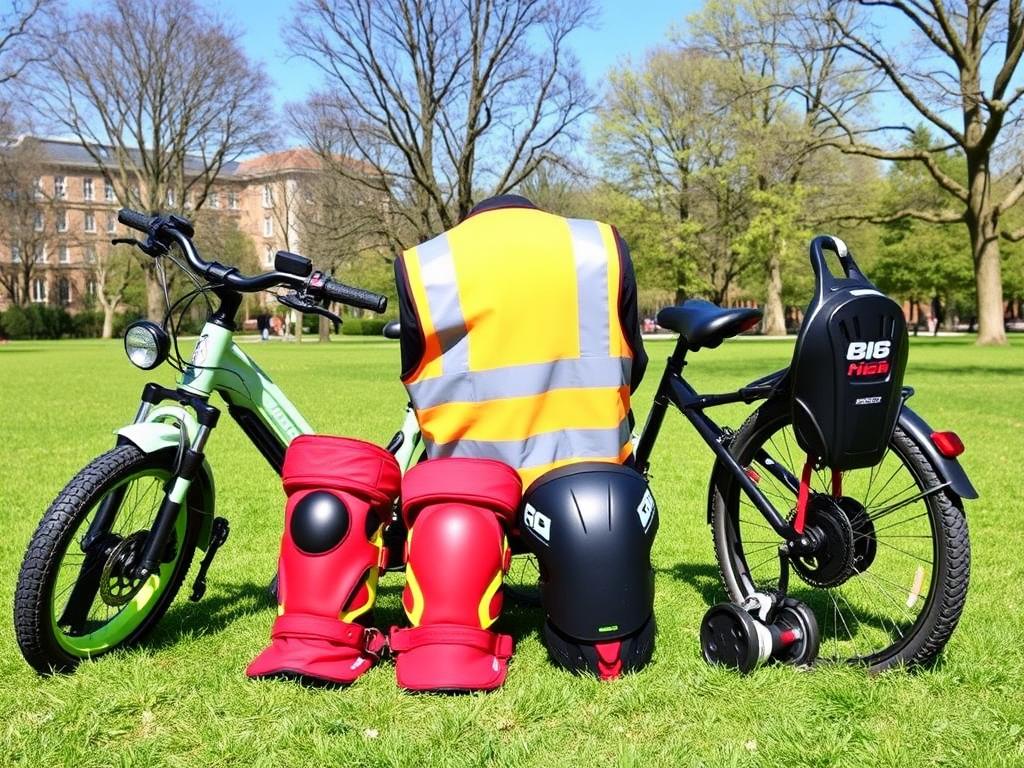
Adding these safety accessories to your family e-bike makes cycling safer and more fun. Always put safety first in your family’s e-bike adventures.
Comfort and Convenience Accessories for Family Trips
Family e-bike adventures need comfort and convenience for all. Accessories like adjustable seats and storage solutions can make a big difference. Let’s look at the key accessories that can improve your family’s e-bike rides.
Adjustable Seats: Perfect Fit for Every Rider
Finding a comfortable riding position is key for fun and safety. Comfortable e-Bike Seats adjust in height and have ergonomic designs. They fit riders of all sizes and preferences.
Look for saddles with lots of cushioning and support. This helps prevent tiredness on long rides.
Panniers and Cargo Racks: Carrying Your Essentials
Family trips need carrying supplies like snacks and extra clothes. e-Bike Cargo Carriers like panniers and racks have lots of space. They keep your stuff safe and easy to reach.
These accessories can be mounted on the back or front of your e-bike. This keeps the ride balanced and stable.
Handlebar Grips: Improving Comfort During Rides
Ergonomic Handlebar Grips with palm rests and cushioning make rides more comfortable. They reduce hand fatigue and offer a secure grip. This lets you enjoy longer rides without discomfort.
| Accessory | Price Range | Key Features |
|---|---|---|
| Adjustable Bike Seat | $52.99 – $59.99 | Ergonomic design, cushioned padding, height adjustment |
| Bike Panniers and Cargo Racks | $249.99 – $499.99 | Ample storage capacity, easy installation, durable construction |
| Ergonomic Handlebar Grips | $19.99 – $24.99 | Cushioned palm rests, non-slip texture, comfortable grip |
Adding these comfort and convenience accessories to your family e-bike setup can make rides better. It ensures every ride is enjoyable and practical.
“Comfort and convenience accessories can make a significant difference in the overall enjoyment of family e-bike outings. Investing in the right accessories ensures that everyone in the family can ride with ease and focus on creating unforgettable memories together.”
Technology Accessories for Family e-Bikes
Technology keeps getting better, and so do the accessories for family e-bikes in the USA. You can find everything from smartphone mounts to GPS trackers. These tools make e-biking safer, easier, and more fun for everyone.
Smartphone Mounts: Navigating with Ease
Smartphone mounts for e-bikes let you use your phone on the go. You can navigate, track your route, and use cycling apps easily. They keep your phone safe and in place, so you can stay connected during rides.
GPS Trackers: Keeping Your Family Safe
GPS Trackers are great for peace of mind. They attach to your e-bike and track its location in real-time. If your bike gets stolen or lost, these trackers help you find it fast, keeping your family safe.
Electric Assistance: Exploring Battery Options
Upgrading your e-bike’s battery can make a big difference. A bigger lithium-ion battery lets you ride longer and go further. There are many sizes and types to choose from, so you can find the right one for you.
Adding these tech accessories to your family e-bike makes every ride better. They help you navigate, keep an eye on your family, and ride longer. These tools are key for anyone who loves family e-biking.
![]()
Fun Accessories for Kids on Family Rides
Making family e-bike rides fun for kids is key. From stylish and safe helmets to fun accessories, there’s a lot to explore. Let’s find out how to make your Family Cycling Gear better for kids.
Kid-Friendly Helmets: Stylish and Safe
Keeping your kids safe is important. Look for Child Seats for e-Bikes with adjustable helmets. They should fit growing heads and have reflective stickers for safety. You’ll find helmets in fun colors and designs that are both safe and stylish.
Bike Trolleys: Bringing Along Younger Children
Bike trolleys are great for young kids who can’t pedal yet. They’re light and can carry one or two kids. You can choose a design that’s also a stroller. This way, your kids can ride safely and comfortably.
Colorful Accessories: Making Rides More Enjoyable
- Streamers in bright colors that move with the wind
- Spoke beads that light up as you ride
- Customizable bells and horns for fun
These Kid-Friendly Bike Accessories make your bikes look cool. They also help kids enjoy the ride more.
“Bike rides with the kids are the best way to bond as a family and create lasting memories. The right accessories make it even more enjoyable for everyone.”
Whether you’re on new trails or just around town, these Child Seats for e-Bikes and Kid-Friendly Bike Accessories will make your rides better. Enjoy cycling together and make every ride special.
Weather Protection Accessories for Your Family e-Bike
Riding an e-Bike with your family can be a fun experience. But, bad weather can sometimes ruin your outdoor fun. Luckily, there are many weather protection accessories to keep you and your family dry and comfy, no matter the weather.
Rain Covers: Staying Dry During Unexpected Showers
A top weather protection accessory for your family e-Bike is a good rain cover. The All-Weather XL E-Bike Cover, priced at $129.99, is a great choice. It’s made of 300D Ripstop Nylon and has a water-resistant coating. This means you can keep riding without getting wet.
Sun Shields: Protecting from Harmful Rays
The sun’s UV rays can also be a problem for e-Bike riders. Sun shields, like canopies or umbrellas, offer great protection. They let you enjoy your rides without worrying about sunburn or heat.
Fenders: Keeping You Clean and Comfortable
Fenders are another key accessory for your family e-Bike. They block road spray, mud, and debris, keeping you clean and dry. Fenders fit different bikes and make your rides comfortable, even in bad weather.
With these weather protection accessories, you can ride more often and stay safe and comfy. Whether it’s raining, sunny, or anything in between, these items will make your family cycling trips better.
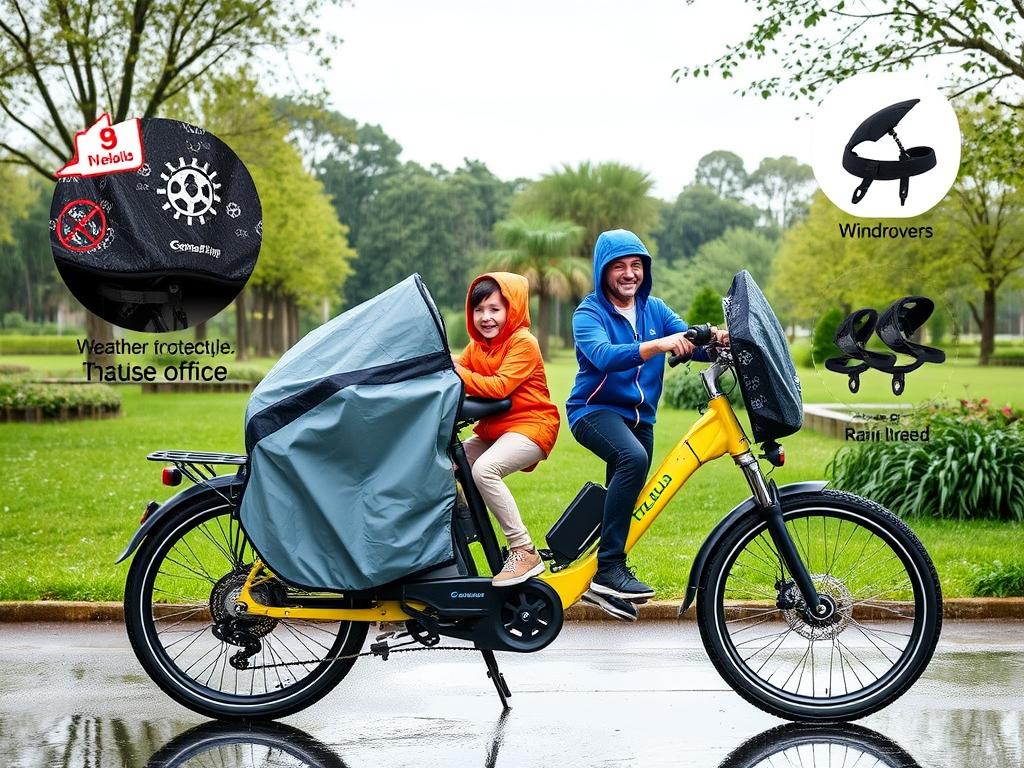
| Accessory | Key Features | Price Range |
|---|---|---|
| All-Weather XL E-Bike Cover |
|
$129.99 |
| Sun Shields (Canopies/Umbrellas) |
|
$50 – $150 |
| Bike Fenders |
|
$20 – $80 |
“With the right weather protection accessories, you can ensure your family e-Bike adventures are enjoyable, even in less-than-ideal conditions.”
By getting e-Bike Weather Protection, Bike Fenders, and Rain Gear for Cycling, you make your rides better. Stay dry, comfy, and safe, and make memories on your e-Bike trips.
Accessories to Enhance Family e-Bike Storage
Enjoying outdoor adventures with your family on e-bikes is more fun with the right storage accessories. These help carry extra supplies and store your e-bikes safely. They make your family e-bike experience better.
Folding Baskets: Additional Room for Supplies
Folding baskets are great for storing things on your family e-bikes. They attach to the rear rack, giving you space for water bottles, snacks, and kids’ stuff. They’re easy to fold up and store when not in use.
Mesh Bags: Organizing Small Items
Mesh bags and panniers keep your e-bike tidy. They’re light, breathable, and attach to your bike or rack. They hold tools, bike locks, and personal items, making them easy to find.
Protective Covers: Keeping Your e-Bike Safe
Protective covers keep your e-bikes safe when not in use. They protect from dust, rain, and UV rays. Choose covers that are weatherproof, durable, and simple to use.
Adding these e-Bike Storage Solutions, Bike Baskets, and e-Bike Covers to your e-bikes makes them more useful and convenient. Every ride becomes more fun and efficient.
Essential Maintenance Accessories for Your Family e-Bike
Keeping your family’s e-bike in good shape is key for safety and fun rides. You need the right tools for quick fixes and keeping it clean. Let’s look at the must-have items for your e-bike care.
Toolkits: Being Prepared for Minor Repairs
A good e-Bike Repair Kits is a must-have. It has tools like Allen wrenches and tire levers for quick fixes. Having the right tools saves you from expensive repairs and keeps your family riding confidently.
Tire Pumps: Ensuring Proper Inflation
Right tire pressure is vital for your e-bike’s performance and safety. A reliable e-Bike Tire Pumps helps keep your tires at the right pressure. This ensures a smooth ride for your family.
Cleaning Supplies: Keeping Your e-Bike in Top Shape
Cleaning your e-bike regularly keeps it looking and working great. Use e-Bike Cleaning Supplies like cleaners and polishing cloths. This keeps your e-bike in top condition.
| Accessory | Price |
|---|---|
| Bike Phone Mount | $28.99 |
| Bicycle Cable Lock | $29.99 |
| VTUVIA E-Bike Chain Lock | $49.99 |
| VTUVIA Foldable E-Bike Front Basket | $69.00 |
| Rear Seat Saddle | $79.00 |
| VTUVIA E-Bike Rear Rack | $79.00 |
| VTUVIA E-Bike Fenders | $79.00 |
Using the right accessories for your e-bike is an investment in safety and fun. Keeping your e-bike in great shape means more enjoyable rides for years.
Choosing the Right Accessories for Your Family e-Bike
Choosing the right accessories for your family e-bike is important. You need to think about Affordable e-Bike Accessories, Quality Bike Gear, and Customized e-Bike Equipment. The right choices will make your rides better and keep your family safe and comfortable.
Budget Considerations: Finding Affordable Options
You don’t have to spend a lot to outfit your e-bike. There are many affordable accessories out there. You can find cargo carriers, designer bells, and safety items like turn signal switches. By comparing prices, you can find great deals without losing quality or function.
Brand Quality: Investing in Durable Products
It’s important to spend on quality and durability. Brands like Pedego and Chain Heart offer Quality Bike Gear. They have everything from t-shirts to seatposts and chargers. Choosing Customized e-Bike Equipment from trusted brands means your e-bike will last for a long time.
Personal Preferences: Finding Your Perfect Fit
The accessories you choose should match your family’s needs and style. You might want a bike phone mount, a cable lock, or a foldable basket. The right mix of Affordable e-Bike Accessories, Quality Bike Gear, and Customized e-Bike Equipment will make your rides perfect for your family.
“Investing in the right accessories can transform your family e-bike into a personalized, safe, and comfortable riding experience.”
Where to Buy Family e-Bike Accessories in the USA
When you start your family adventures with an e-Bike, getting the right gear is key. Luckily, there are many places in the USA to find e-Bike accessories. Each one has its own benefits to meet your family’s needs.
Local Bike Shops: Supporting Your Community
Going to your local bike shop is a great way to find e-Bike accessories. The staff there knows a lot and can help you pick the best gear for your family. Plus, you help your community grow by shopping locally.
Online Retailers: Convenience and Variety
For more choices, try online stores like Radio Flyer and Pedego. They make shopping easy. You can look at lots of products and find the perfect fit for your family e-Bike.
Second-Hand Options: Saving Money While Shopping
Want to save money on e-Bike accessories? Check out second-hand options. You can find used gear on online marketplaces, at bike swaps, or in your community. It’s a smart way to get great gear without spending a lot.
No matter if you shop locally, online, or second-hand, there are many ways to find the right accessories for your family e-Bike in the USA. Each option has its own advantages, helping you find the best gear for your cycling adventures.
Planning Family Adventures with Your e-Bike
Exploring Family e-Bike Trails is an exciting adventure for families in the USA. Electric bicycles offer power and convenience for unforgettable trips. You can explore different terrains and make memories that last.
Whether you prefer city routes or scenic trails, e-bikes make it fun for everyone. They’re great for all ages and fitness levels.
Top Family-Friendly Trails Across the USA
The USA has many Family e-Bike Trails for every family’s adventure. Look for bike-friendly paths, rails-to-trails, and nature preserves. These routes are safe and scenic, perfect for reconnecting with nature.
They offer the ease of electric-assisted pedaling. This makes your ride comfortable and enjoyable.
Packing Essentials: For a Perfect Day Out
Get ready for a day of fun with your family e-Bike. Pack water, healthy snacks, and a first-aid kit. These items keep everyone hydrated and comfortable.
Remember to bring tools and spare parts for minor repairs. With these essentials, you can enjoy the ride and make memories.
Safety Tips: Ensuring an Enjoyable Experience
For a safe and fun Family e-Bike Trails adventure, follow Bike Safety Tips. Make sure everyone wears helmets and reflective gear. This increases visibility.
Know the local traffic laws and stay alert. These simple steps help you navigate trails safely. You’ll enjoy an unforgettable experience.
E-bikes offer endless possibilities for families in the USA. Whether in cities or countryside, planning and safety tips ensure a great time. Start your next Family e-Bike Trails adventure and make memories that will last forever.
Conclusion: Elevating Your Family e-Bike Experience
Exploring family e-biking is a journey filled with benefits and joy. The right accessories can make your experience better and create lasting memories. They can make your family outings unforgettable.
Encouraging Family Bonding through Cycling
Family e-biking is a great way to bond and share moments. Cycling together, whether in the city or nature, leads to laughter and memories. It brings families closer and strengthens their bond with nature.
The Joys of Exploring Together
E-bikes offer many adventures, from trails to historic towns. The right accessories, like cargo racks and child seats, let everyone join in. These experiences, like geocaching or birdwatching, become family highlights.
FAQ
Q: What are the essential accessories for family e-bikes in the USA?
A: Key accessories for family e-bikes in the USA include helmets, lights, and reflectors. Also, locks, storage solutions, and maintenance tools are important. These items make family rides safer, more comfortable, and practical.
Q: Why are accessories important for family e-bikes?
A: Accessories are key for family e-bikes. They boost safety, comfort, and usefulness. They protect, make you more visible, offer storage, and keep the e-bike running well. This makes family rides better and more fun.
Q: What safety accessories should I consider for my family e-bike?
A: For safety, get CPSC-certified helmets and reflective gear. Also, LED lights, mirrors, and bells or horns are good. These items lower injury risk and help you see and be seen.
Q: How can comfort accessories enhance my family e-bike experience?
A: Comfort accessories like adjustable seats and ergonomic grips make a big difference. Cargo racks also help. They support you, reduce tiredness, and make trips more useful.
Q: What technology accessories are available for family e-bikes?
A: You can get smartphone mounts, GPS trackers, and battery upgrades for your e-bike. These tech items improve navigation, security, and performance. They make rides more fun and efficient.
Q: How can I make family e-biking more fun for kids?
A: Use kid-friendly accessories like stylish helmets and bike trolleys. Colorful items like bells and spoke beads also add fun. They encourage kids to join in and create lasting memories.
Q: How can I protect my family e-bike from the weather?
A: Use weather protection like rain covers and sun shields. Fenders also help keep you dry and clean. These items extend your riding season and boost comfort.
Q: What storage accessories are available for family e-bikes?
A: There are many storage options like folding baskets and mesh bags. Protective covers are also useful. They offer flexible space, organize items, and protect your e-bike.
Q: What maintenance accessories should I have for my family e-bike?
A: Keep a toolkit, portable pump, and cleaning supplies handy. These tools help with minor fixes and keep your e-bike looking and working great.
Q: How do I choose the right accessories for my family e-bike?
A: Think about your budget, the quality of the items, and what you like. Choose durable, high-quality accessories from trusted brands. This ensures value and a customized e-biking experience for your family.
Q: Where can I buy family e-bike accessories in the USA?
A: You can find family e-bike accessories at local bike shops, online, and second-hand. Each place has its own benefits, like personal service, convenience, and savings.
Q: How can I plan family adventures with my e-bike?
A: Research trails, pack what you need, and follow safety tips. Good planning leads to memorable experiences and fun for everyone.



